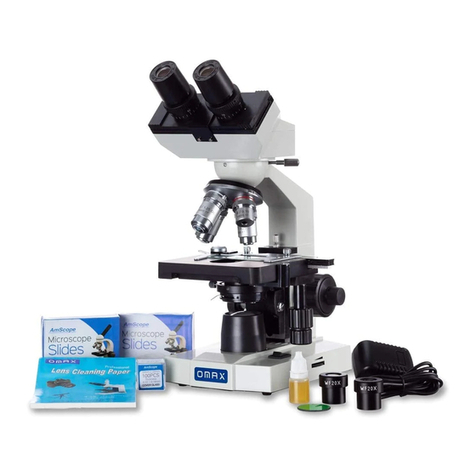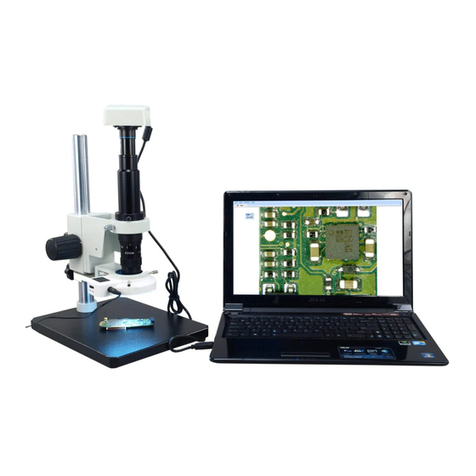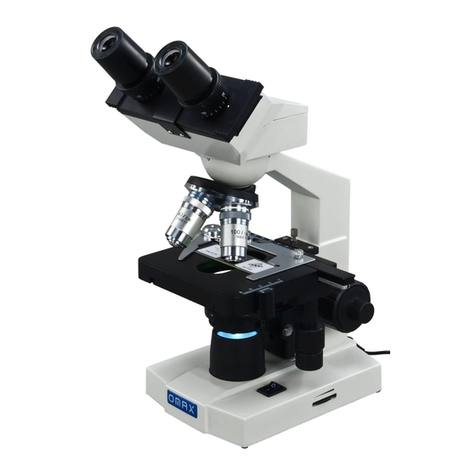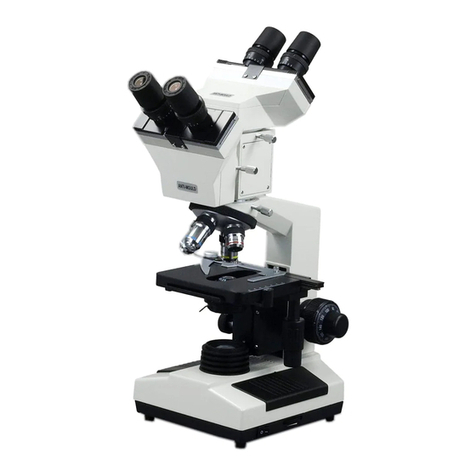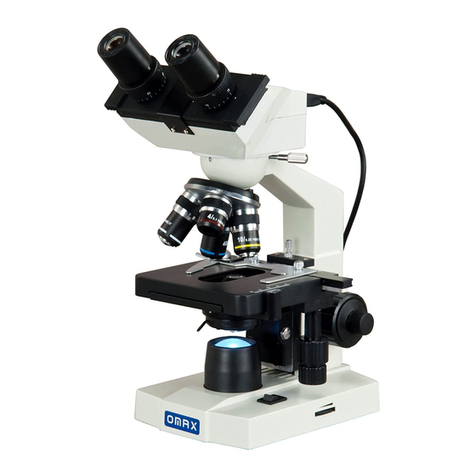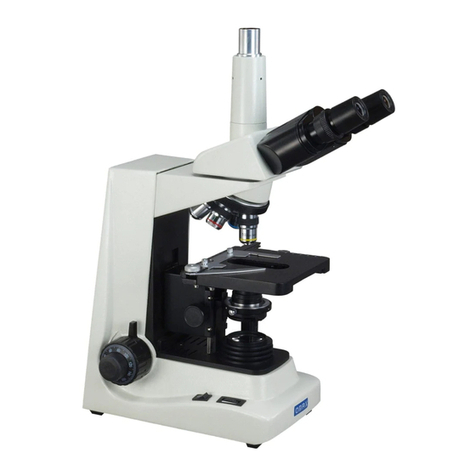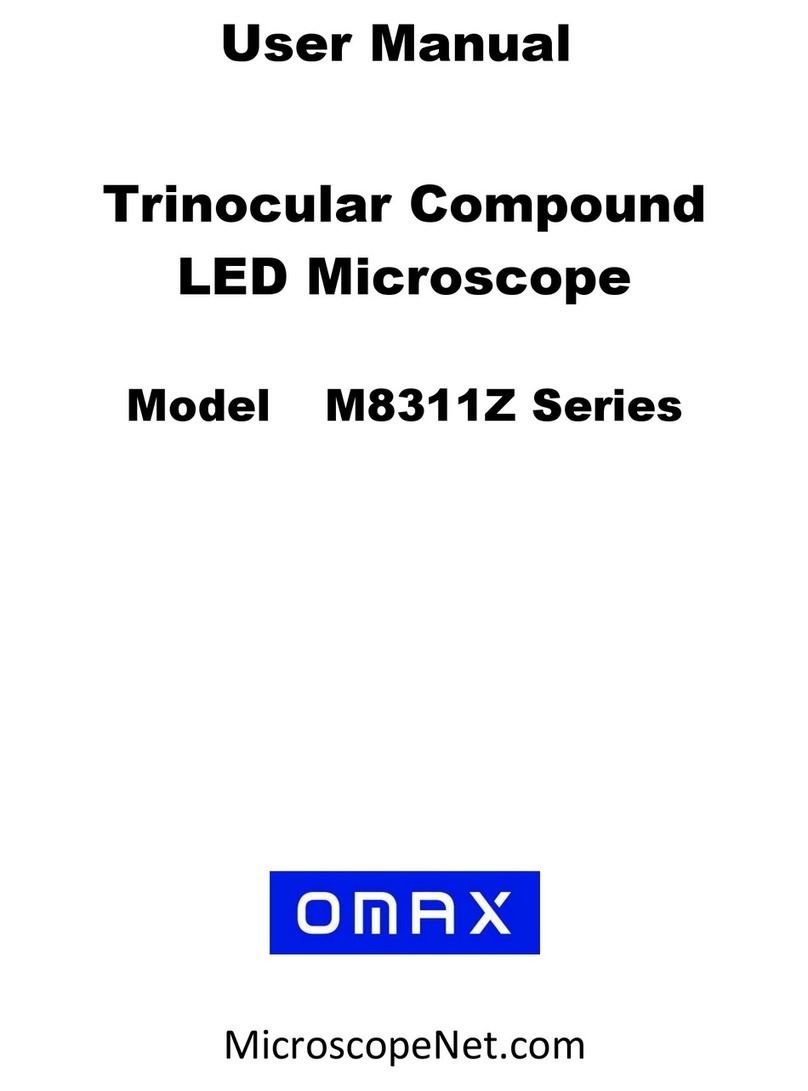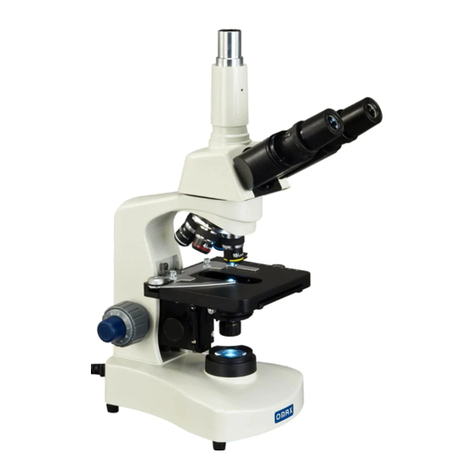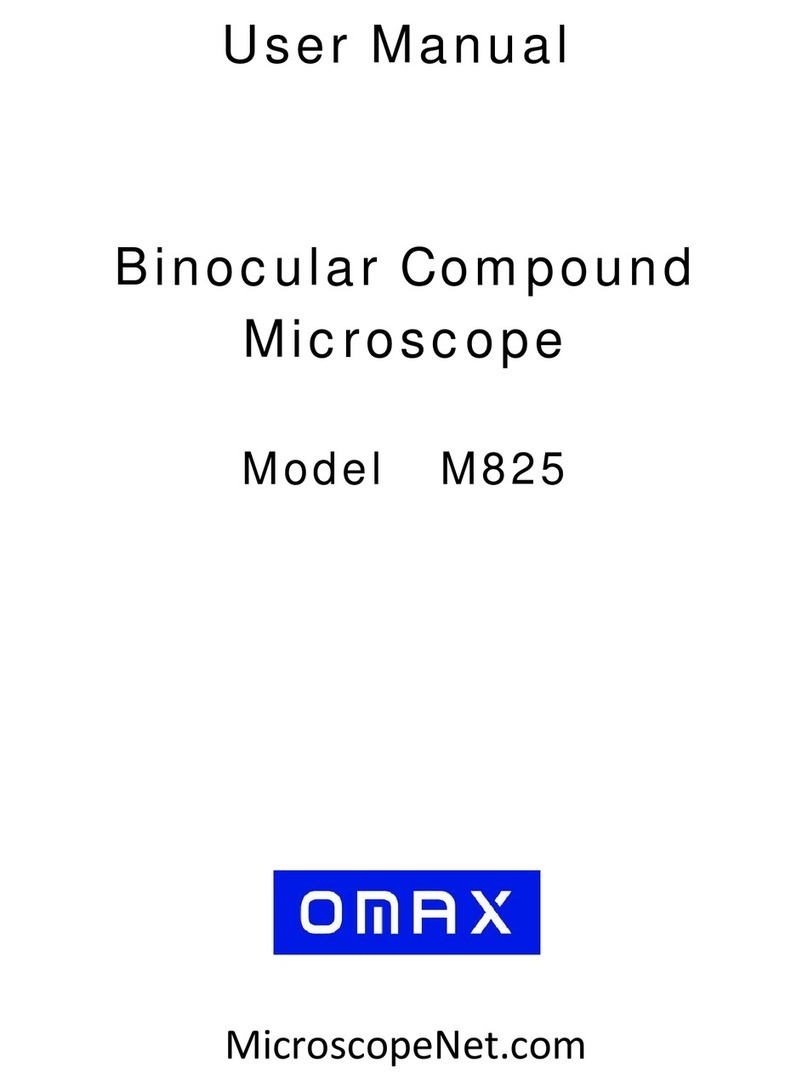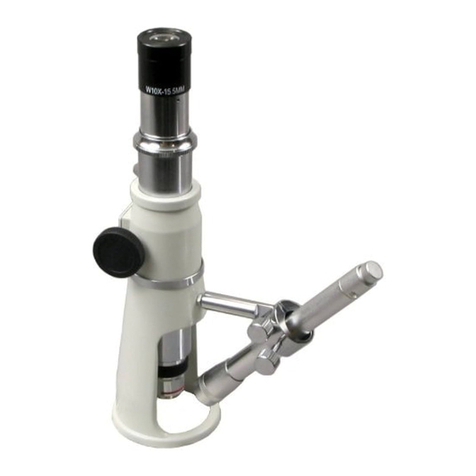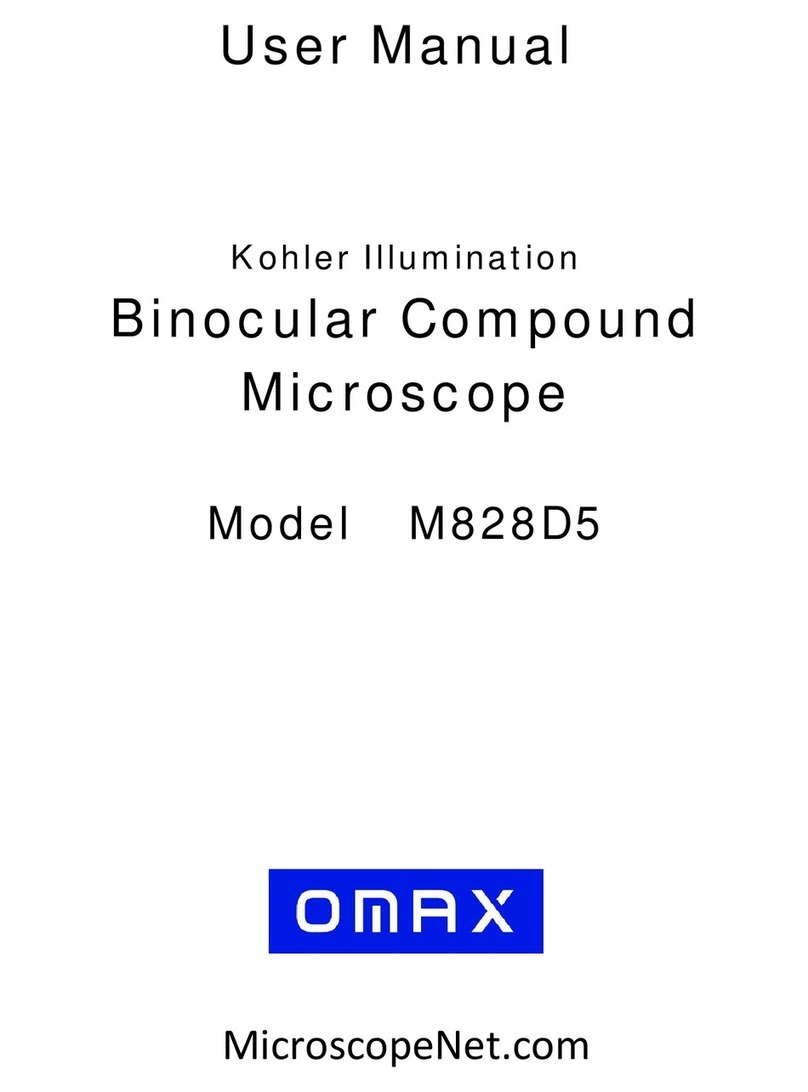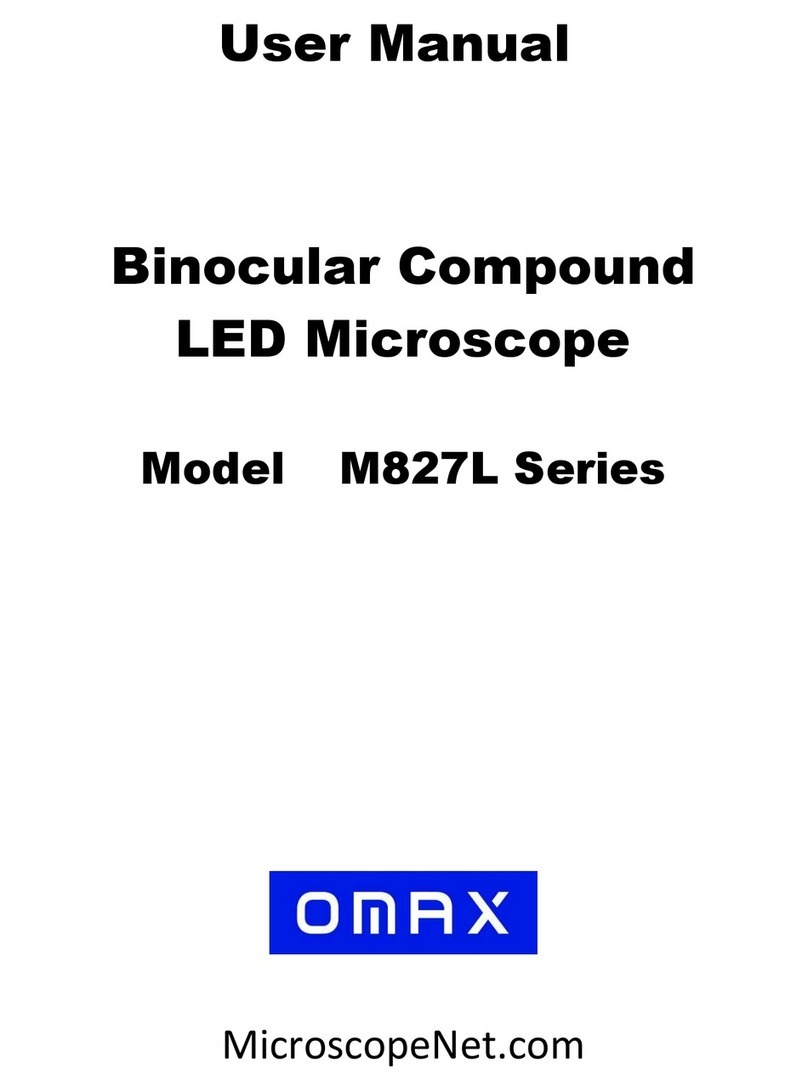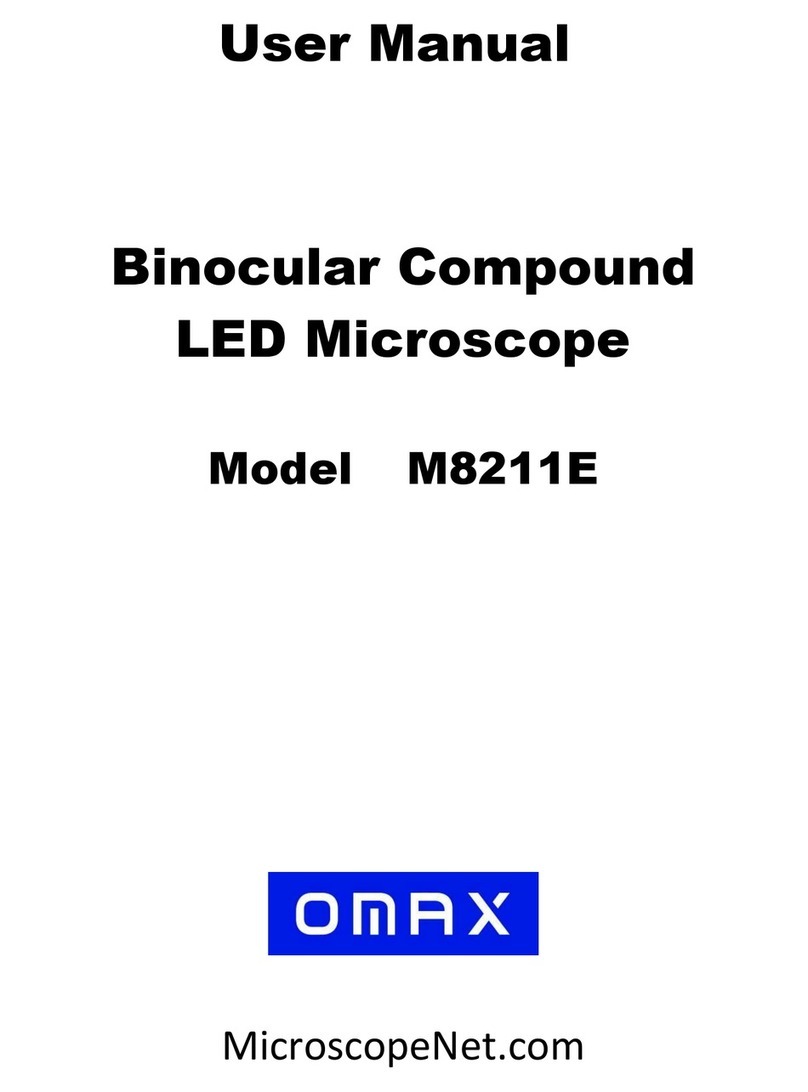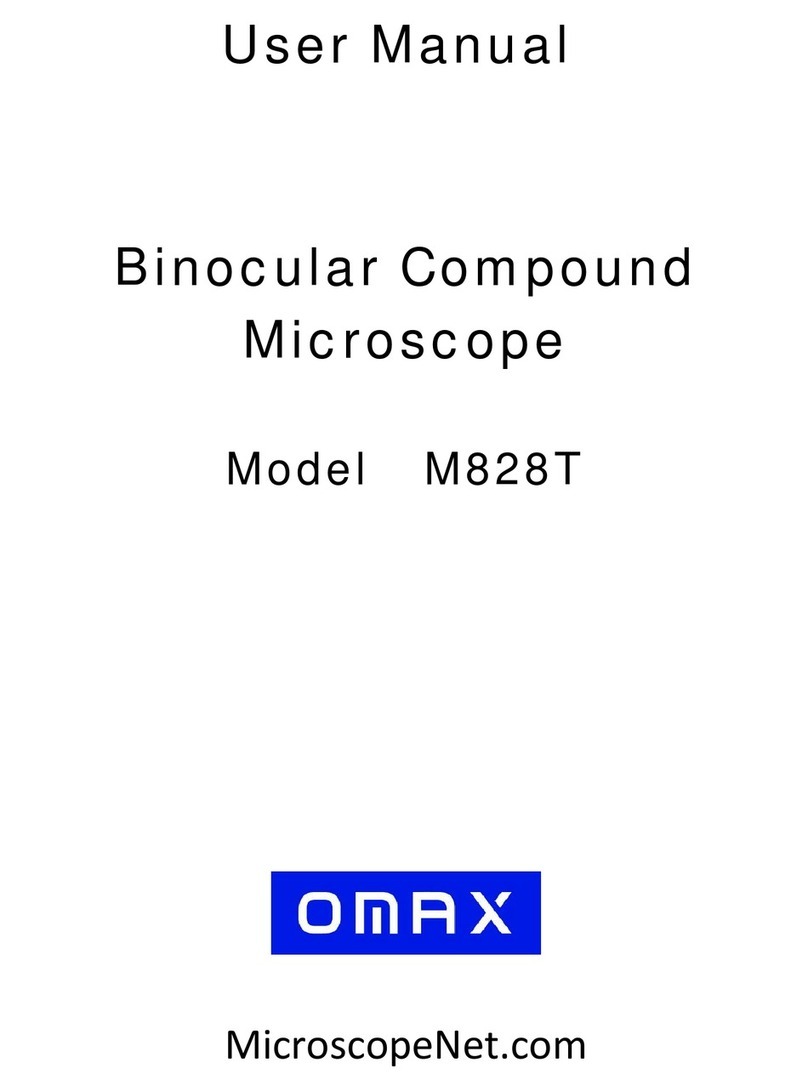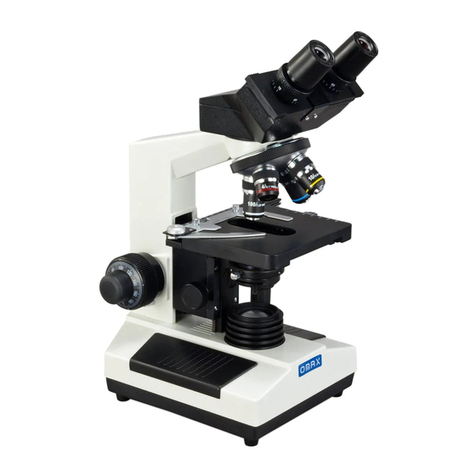3Operation
3.1 Adjusting illumination
1) Plug the power cord into the power socket on the microscope and connect it to the
power outlet.
2) Turn on the power switch.
3) Rotate the brightness intensity dial to increase or decrease the brightness.
Caution:
A diffusion filter is attached beneath the condenser to get uniform light and protect your
eyes from strong light when a low power objective applied. The diffusion filter can be
swung out to make the view field brighter when observing with a high power objective,
such as 100X objective.
3.2 Placing specimen
1) Place the slide on the mechanical stage.
2) Use the slide holder to gently secure the slide.
3) Turn the X and Y stage moving knobs to position the specimen in the center of
viewing field.
Caution:
Be sure not to allow an objective to touch a specimen slide when changing objectives.
3.3 Adjusting interpupillary distance
While observing with both eyes, hold the left and right eyepiece tubes then slide the
tubes in and out. The interpupillary distance is correct when the left and right fields of
view converge completely into one image.
3.4 Adjusting eyepiece diopter
1) Rotate the 10x objective into position.
2) Rotate the diopter rings on the eyepiece tubes until
its numerical value is the same as your interpupillary
distance, for example, 70 in the figure (See Fig. 6).
3) Close your left eye and bring the specimen into
focus following the focusing procedures in 3.5.
4) Close your right eye and bring the same specimen
into clear sharp focus by adjusting the diopter ring
on left eyepiece tube only. Do not use focus knobs
at this step.
5) Since both sides are adjustable, you may also do
the above in the opposite way, in other words, left
eye first and right eye second.
3.5 Focusing
1) With the 10x objective in position, raise the
mechanical stage using the coarse focus knob until the specimen is close to the
objective.
2) Turn the coarse focus knob until the specimen is in focus.
3) Use the fine focus knob to obtain a sharp image.
4) To get a good focused image, you may need to combine the focus knob adjustment
and interpupillary distance adjustment, along with eyepiece diopter adjustment stated
in 3.3and 3.4.
5) You may now switch to another magnification objective.



